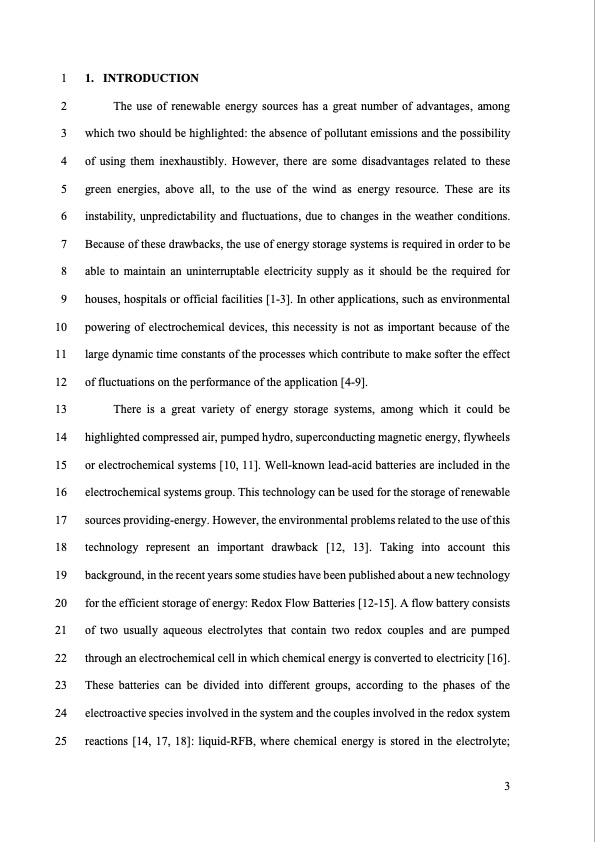
PDF Publication Title:
Text from PDF Page: 003
1 1. INTRODUCTION 2 The use of renewable energy sources has a great number of advantages, among 3 which two should be highlighted: the absence of pollutant emissions and the possibility 4 of using them inexhaustibly. However, there are some disadvantages related to these 5 green energies, above all, to the use of the wind as energy resource. These are its 6 instability, unpredictability and fluctuations, due to changes in the weather conditions. 7 Because of these drawbacks, the use of energy storage systems is required in order to be 8 able to maintain an uninterruptable electricity supply as it should be the required for 9 houses, hospitals or official facilities [1-3]. In other applications, such as environmental 10 powering of electrochemical devices, this necessity is not as important because of the 11 large dynamic time constants of the processes which contribute to make softer the effect 12 of fluctuations on the performance of the application [4-9]. 13 There is a great variety of energy storage systems, among which it could be 14 highlighted compressed air, pumped hydro, superconducting magnetic energy, flywheels 15 or electrochemical systems [10, 11]. Well-known lead-acid batteries are included in the 16 electrochemical systems group. This technology can be used for the storage of renewable 17 sources providing-energy. However, the environmental problems related to the use of this 18 technology represent an important drawback [12, 13]. Taking into account this 19 background, in the recent years some studies have been published about a new technology 20 for the efficient storage of energy: Redox Flow Batteries [12-15]. A flow battery consists 21 of two usually aqueous electrolytes that contain two redox couples and are pumped 22 through an electrochemical cell in which chemical energy is converted to electricity [16]. 23 These batteries can be divided into different groups, according to the phases of the 24 electroactive species involved in the system and the couples involved in the redox system 25 reactions [14, 17, 18]: liquid-RFB, where chemical energy is stored in the electrolyte; 3PDF Image | Vanadium Redox Flow Batteries for wind turbines

PDF Search Title:
Vanadium Redox Flow Batteries for wind turbinesOriginal File Name Searched:
wind-turbine-flow-battery-storage.pdfDIY PDF Search: Google It | Yahoo | Bing
Salgenx Redox Flow Battery Technology: Salt water flow battery technology with low cost and great energy density that can be used for power storage and thermal storage. Let us de-risk your production using our license. Our aqueous flow battery is less cost than Tesla Megapack and available faster. Redox flow battery. No membrane needed like with Vanadium, or Bromine. Salgenx flow battery
| CONTACT TEL: 608-238-6001 Email: greg@salgenx.com | RSS | AMP |